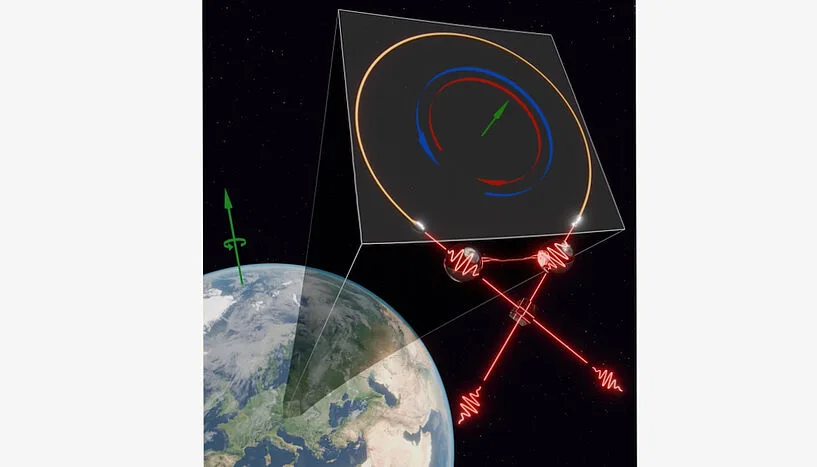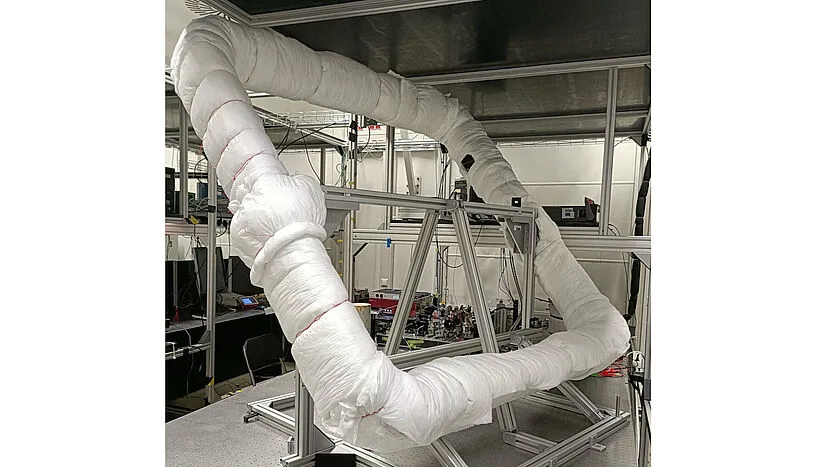A team led by Philip Walther at the University of Vienna has successfully measured the effect of Earth’s rotation on quantum entangled photons, a significant achievement in the field of quantum mechanics and general relativity. The researchers used a giant optical fiber Sagnac interferometer, a device known for its precision in measuring rotational speeds. The experiment, part of the research network TURIS, confirmed the interaction between rotating reference systems and quantum entanglement, improving precision by a thousand times compared to previous experiments. This could pave the way for future experiments exploring quantum entanglement through spacetime curves.
Quantum Entanglement and Earth’s Rotation: A Groundbreaking Experiment
A groundbreaking experiment led by Philip Walther at the University of Vienna has successfully measured the effect of Earth’s rotation on quantum entangled photons. This research, recently published in Science Advances, represents a significant advancement in the field of entanglement-based sensors, potentially paving the way for further exploration at the intersection of quantum mechanics and general relativity.
Optical Sagnac interferometers, the most sensitive devices to rotations, have been instrumental in our understanding of fundamental physics since the early 20th century, contributing to the establishment of Einstein’s special theory of relativity. Their unparalleled precision makes them the ultimate tool for measuring rotational speeds, limited only by the boundaries of classical physics.
Interferometers employing quantum entanglement have the potential to surpass these limits. In quantum entanglement, the overall state of two or more particles is known, but the state of the individual particle remains undetermined until measurement. This property can be used to obtain more information per measurement than would be possible without it. However, the delicate nature of entanglement has hindered the expected quantum leap in sensitivity.
Overcoming the Challenges of Quantum Entanglement
The Vienna team overcame these challenges by building a giant optical fiber Sagnac interferometer and maintaining low and stable noise for several hours. This allowed the detection of enough high-quality entangled photon pairs to outperform the rotation precision of previous quantum optical Sagnac interferometers by a thousand times.
In a Sagnac interferometer, two particles traveling in opposite directions of a rotating closed path reach the starting point at different times. With two entangled particles, they behave like a single particle testing both directions simultaneously while accumulating twice the time delay compared to the scenario where no entanglement is present. This unique property is known as super-resolution.
The Experiment: Quantum Entanglement and Earth’s Rotation
In the actual experiment, two entangled photons were propagating inside a 2-kilometer-long optical fiber wound onto a large coil, realizing an interferometer with an effective area of more than 700 square meters. A significant challenge the researchers faced was isolating and extracting Earth’s steady rotation signal.
“The core of the matter,” explains lead author Raffaele Silvestri, “lays in establishing a reference point for our measurement, where light remains unaffected by Earth’s rotational effect. Given our inability to halt Earth’s from spinning, we devised a workaround: splitting the optical fiber into two equal-length coils and connecting them via an optical switch”. By toggling the switch on and off, the researchers could effectively cancel the rotation signal at will, which also allowed them to extend the stability of their large apparatus.
The Results and Future Implications
The experiment, conducted as part of the research network TURIS hosted by the University of Vienna and the Austrian Academy of Sciences, successfully observed the effect of the rotation of Earth on a maximally entangled two-photon state. This confirms the interaction between rotating reference systems and quantum entanglement, as described in Einstein’s special theory of relativity and quantum mechanics, with a thousand-fold precision improvement compared to previous experiments.
“That represents a significant milestone since, a century after the first observation of Earth’s rotation with light, the entanglement of individual quanta of light has finally entered the same sensitivity regimes”, says Haocun Yu, who worked on this experiment as a Marie-Curie Postdoctoral Fellow. “I believe our result and methodology will set the ground to further improvements in the rotation sensitivity of entanglement-based sensors. This could open the way for future experiments testing the behavior of quantum entanglement through the curves of spacetime”, adds Philip Walther.

External Link: Click Here For More




